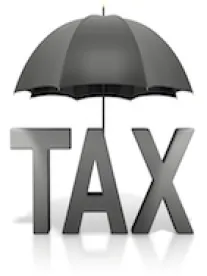Last week I attended the NABL Tax and Securities Law Institute, which always provides valuable insights from representatives of Treasury and the IRS. Vicky Tsilas, Chief, Branch 5, Financial Institutions and Products, was a panelist for Tax Hot Topics and gave a very interesting status report on the 2016-2017 Guidance Plan (first reported on here), which was issued on August 15, 2016. In addition to noting those projects that have been completed, she also discussed the remaining items, indicating her priorities and possibly the order in which they will be completed, recognizing of course that TEB does not have control over the timing of the necessary approvals within Treasury. (I’d also like to thank Ms. Tsilas for our subsequent discussion clarifying several points for this report.)
Of the seven items on the 2016-‘17 Guidance Plan, three have been completed in the order they are listed below. The remaining four – yet to be completed –are described in Ms. Tsilas’s order of priority.
Completed Guidance Plan Items
-
Final regulations on arbitrage investment restrictions under section 148.
Proposed regulations on arbitrage investment restrictions under IRC section 148 were published on September 26, 2007, and September 16, 2013. Final regulations were issued July 18, 2016, giving the Treasury and IRS a head start in completing its 2016-’17 Guidance Plan, which was issued almost a month later on August 15. The final regulations, summarized in Joel Swearingen’s post of July 22 (here), included guidance on working capital financings, including long-term working capital issues, revised requirements for the integration of hedges, technical rules for the calculation of issue yield and valuation of investments, and clarification of the treatment of proceeds used to make a grant.
-
Final regulations on the definition of issue price for tax-exempt bonds under section 148.
Final issue price regulations, completed after a long and painful process, were issued on December 8, 2016, with a delayed effective date of June 7, 2017, and were described by Johnny Hutchinson in his post of December 22 (here).
-
Revenue procedure that will update Revenue Procedure 97-13 relating to the conditions under which a management contract does not result in private business use under section 141.
The IRS completed this item twice – publishing Rev. Proc. 2016-44 on August 22, 2016, and then publishing Rev. Proc. 2017-13 on January 17, 2017, all of which we described in these posts: here, here, here, and here. While the IRS doesn’t get double credit on the Guidance Plan scorecard for completing this item twice, the liberalizations provided in Rev. Proc. 2016-44, with further liberalizations in Rev. Proc. 2017-13 are much appreciated.
Guidance Plan Items to Be Completed
-
Final regulations on public approval requirements for private activity bonds under section 147(f).
Ms. Tsilas reported at TSLI that this is her highest priority item and hopefully the next item on the 2016-’17 Guidance Plan that will be completed. Proposed regulations on the TEFRA public approval requirements were published on September 9, 2008. These proposed regulations were generally very favorable and practitioners have been anxious for their finalization. The proposed regulations would (i) require a simplified description of the project to be financed, (ii) provide permission in some cases for post-issuance public approval where the facility to be financed changed, (iii) allow an issuer to post notice of the hearing on its website under certain circumstances, (iv) allow an issuer to cancel the hearing if no requests to participate in the hearing were received, (v) provide a two-stage public approval process for qualified 501(c)(3) pool issues where certain information, such as facility locations, is unknown when the bonds are issued, and (vi) provide that using an amount of proceeds for a facility that differs from the amount stated in the TEFRA notice by no more than 5% of net proceeds is an insubstantial deviation. As to this final point, note that this rule – presumably a safe harbor – would not apply if the amount of proceeds spent on a project was more than 5% less than the amount of proceeds stated in the TEFRA notice, which most (all?) practitioners would not have expected to be a problem.
-
Regulations on bond reissuance under section 150.
The next highest priority item is the long-awaited regulations on reissuance, incorporating both the Cottage Savings regulations (section 1.1001-3) and the “qualified tender bond” rules, which originally date back to a 1988 notice (Notice 88-130) issued in anticipation of regulations to come. In her remarks at TSLI, Ms. Tsilas stated that it was not yet known whether these regulations would be issued under IRC sections 141 to 150 (presumably section 150) or under section 1001. While this might be taken to suggest that these regulations are far from complete, Ms. Tsilas assured me after the Institute that the decision on this point should not significantly delay the finalization of these regulations. It should also be noted that the Section of Taxation of the American Bar Association just submitted comments, dated March 7, 2016, to the IRS in response to Treasury’s request for comments on Treas. Reg. section 1.1001-3. It is not known whether these comments could slow finalization of the rules applicable to tax-exempt bonds.
-
Guidance on remedial actions for tax-advantaged bonds under section 54A, 54AA and 141.
Ms. Tsilas explained that this guidance will address problematic issues that have been identified in the current remedial action rules, including possibly some broadening of the existing rules. The new guidance will also provide the first set of remedial action rules for BABs and other tax credit bonds.
-
Regulations on the definition of political subdivision under section 103 for purposes of the tax-exempt, tax-credit and direct pay bonds provisions.
Controversial proposed regulations on the definition of “political subdivision” were published on February 23, 2016. These proposed regulations would add to the traditional “sovereign powers” requirement two additional requirements: “governmental purpose” and “governmental control.” The proposed requirements have tax lawyers struggling to square the two proposed requirements with certain entities as to which governmental status has never been doubted. Let’s hope for some clarification in the final regulations, whenever we may see them.




 />i
/>i

